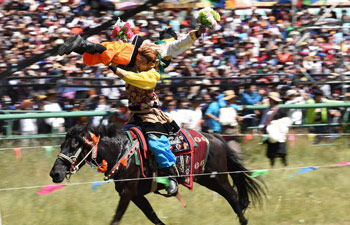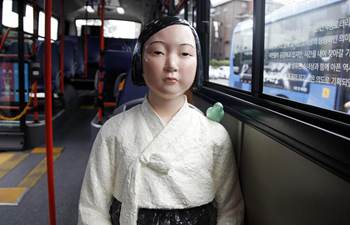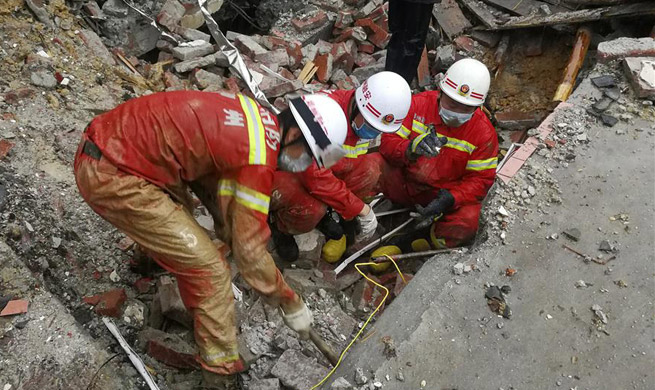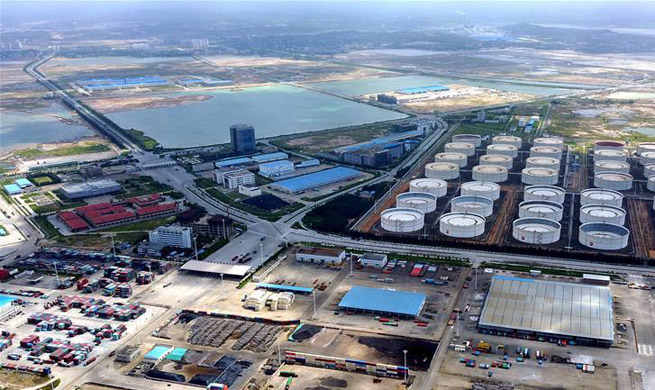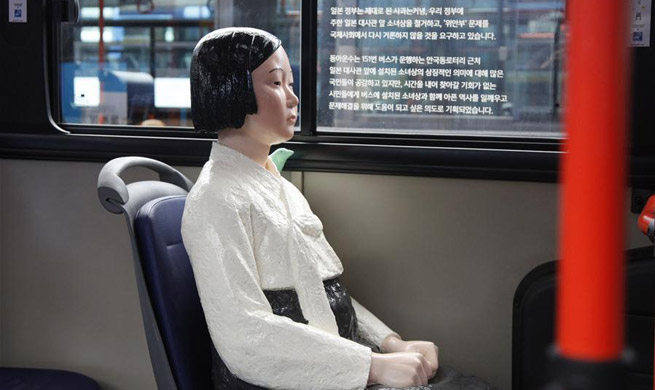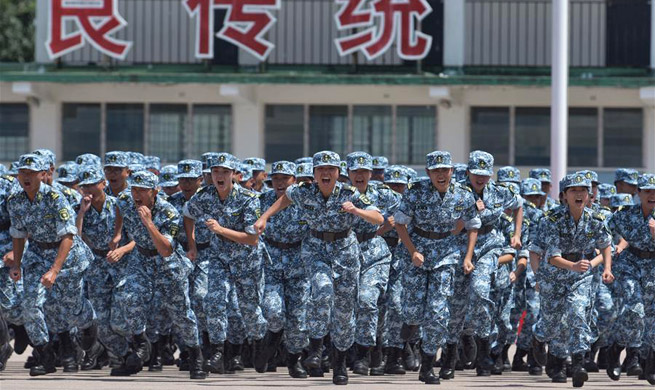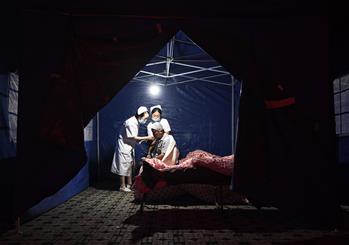SEOUL, Aug. 14 (Xinhua) -- Five South Korean busses began Monday to take on the statue of a young girl each with other passengers to remind people of the severe pains suffered by Korean women and girls who were forced into sexual slavery for Japanese military brothels before and during World War II.
It was the project, titled "Dream Lost by Girls," to mark the fifth anniversary of the International Memorial Day for "Comfort Women", a euphemism for the sex enslavement victims.
The project was funded by a civilian, Rim Jinwook who leads a bus company Dong-A Traffic Service.
The statue of a young girl, which symbolizes the comfort women victims, sat on a chair inside the buses traveling around the central Seoul that includes the Japanese embassy, several universities and middle and high schools.
"I wanted to help students be reminded of our painful history and establish a right perception of history," Rim said in a telephone interview.
"As today marks the fifth anniversary of the world's comfort women memorial day, I wanted to help busy people in Seoul be reminded of the meaning of a girl statue," said Rim.
On Aug. 14, 1991, late Kim Hak Soon gave the first testimony about her horrible memory when she worked as sex slaves for Japanese soldiers as a young girl, making public to the world the lies of the Japanese government.
Her courageous testimony was followed by vivid memories of other surviving victims. Historians estimate that the number of comfort women victims, mostly women of the Korean Peninsula suffering the 1910-45 Japanese colonial rule, is 200,000 or so.
The first statue of a girl was erected opposite the Japanese embassy in Seoul in December 2011 to mark the 1, 000th anniversary of the so-called "Wednesday demonstration," the weekly protest rally outside the Japanese embassy to demand Japan's official acknowledgement of its involvement in the wartime crime against humanity.
The Japanese government of Prime Minister Shinzo Abe reached a "final and irreversible" agreement on the issue with the previous South Korean government in exchange for offering 1 billion yen (8.6 million U.S. dollars) to a fund that helps the comfort women victims.
The South Korean victims demanded the nullification of the December 2015 agreement as the Abe cabinet had yet to acknowledge the government responsibility for the WW II sex enslavement program.
Japan recalled its top two diplomats in South Korea earlier this year to protest against the erection last December of a girl statue outside the Japanese consulate in Busan, the southeastern port city of South Korea.
The girl statues, carried by the five buses, are identical with other bronze ones, placed at over 70 areas across the country, except for material. The five statues are made from fiber-reinforced plastics for the safety of passengers.
They sat on a bus chair, with their fists clenched in the lap to express their resolve to tell the truth. The girls looked impassive but determined, with a bird sitting on their shoulders to symbolize peace and freedom. Their heels were unattached to the ground to represent their painful lives.
The girl statue buses would run in Seoul for 45 days. During the traditional Chuseok holiday in October, the statues would be moved to five major cities across the country.
"The statues will be placed beside other (bronze) statues in the cities. It will become a homecoming of the statues on behalf of the (deceased) victims," said Rim.






